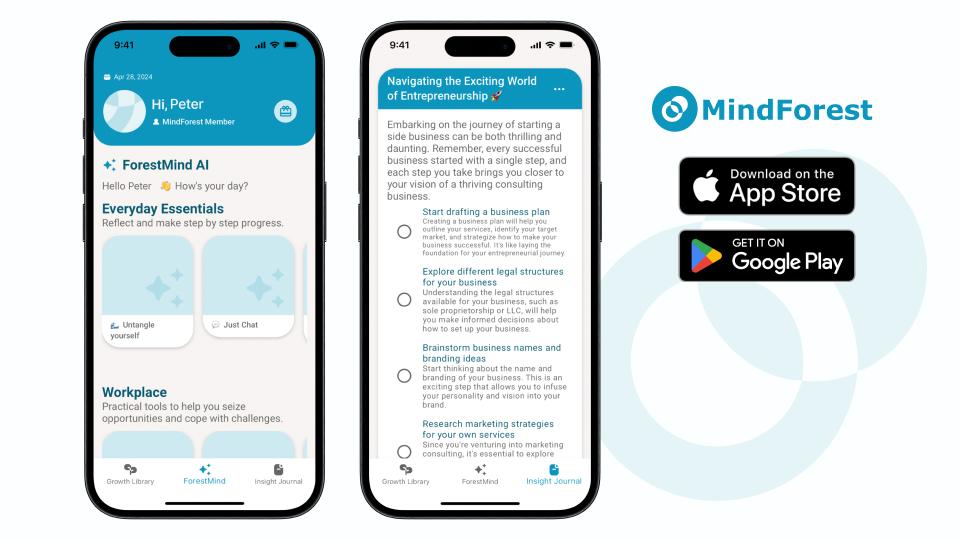
Ghosting and Avoidant Behaviour: Why We Pull Away and 3 Ways to Heal from It
Have you ever experienced ghosting? The two of you were chatting happily the night before, and the next day the person suddenly disappears, never replying again?
Have you ever found yourself endlessly scrolling through social media, caught in a cycle of social media addiction fuelled by dopamine, not knowing what you’re doing, yet unable to stop? In this article, let's explore what dopamine is and how we can truly find lasting fulfilment in our lives, beyond just the temporary highs of social media addiction.

Have you ever found yourself endlessly scrolling through social media, caught in a cycle of social media addiction fuelled by dopamine, not knowing what you’re doing, yet unable to stop? You fall into a state that’s neither happy nor unhappy—just a sense of helplessness. This feeling is linked to the way dopamine affects our brains. There’s a recent book called Dopamine Nation that discusses how modern urban life is heavily influenced by dopamine, often through social media addiction. In this article, I want to explore what dopamine is and how we can truly find lasting fulfilment in our lives, beyond just the temporary highs of social media addiction.
Dopamine is a neurotransmitter, which means it’s a chemical in the brain that helps transmit signals between nerve cells (Lembke, 2021). It plays a crucial role in various functions, especially in motivation and our drive to take action. When dopamine levels are high, we feel motivated and energised to pursue something we want. This is linked to our brain’s “Behavioural Activation System” (BAS), which acts like a gas pedal that pushes us toward our goals (Lembke, 2021).
Dopamine is released in moments when we anticipate a reward or experience something exciting. For instance, it spikes when you’re about to achieve a goal, like when you’re close to winning a game or pursuing someone you like. However, once the goal is reached, dopamine levels tend to drop because its main purpose is to push us toward what we value, rather than rewarding us for having achieved it.
In the context of social media addiction, dopamine is heavily involved. Social media platforms are designed to trigger frequent dopamine releases by providing constant notifications, likes, and new content. Each time you receive a “like” or see something interesting, a small burst of dopamine is released, encouraging you to keep scrolling for more. This constant cycle of seeking new rewards can trap people in a loop of compulsive checking, making social media difficult to resist.
Overcoming social media addiction requires a combination of self-awareness, discipline, and habit changes. Here are three strategies to help break the cycle and regain control, incorporating the concept of dopamine detox:
A dopamine detox involves temporarily eliminating activities that give you instant gratification, like social media, to reset your brain’s reward system (Lembke, 2021). This doesn’t mean avoiding all pleasurable activities but rather focusing on those that provide long-term satisfaction. By taking a break from social media for a few hours, a day, or even a week, you can help reduce the reliance on the constant dopamine hits triggered by notifications and scrolling. During the detox period, engage in naturally rewarding activities, such as exercise, reading, or hobbies, which allow your brain to experience pleasure in a healthier, more sustainable way.
Limiting the time you spend on social media can significantly reduce its addictive nature. Set specific time slots for when you can check your accounts, and avoid using social media outside of those times. You can use app blockers or screen time management tools to help enforce these limits. Gradually reducing your usage can decrease the frequent dopamine spikes that lead to social media addiction, making it easier to focus on other fulfilling activities.
Mindfulness techniques, such as meditation or journaling, can help you recognise the emotions and triggers that lead you to mindlessly scroll through social media. Being aware of these patterns allows you to address the root cause of your social media addiction, such as boredom, loneliness, or stress. By observing your thoughts and emotions, you can reduce the craving for the quick dopamine bursts from social media and seek more meaningful connections.
Developing long-term fulfilment and satisfaction involves shifting focus from quick dopamine fixes, like social media addiction, to activities that foster true happiness. This means engaging in pursuits that provide deeper, more lasting rewards. One effective approach is to set meaningful goals that challenge you and align with your values. Working towards personal or professional milestones, such as learning a new skill, pursuing a hobby, advancing in your career or chasing your dreams, can release dopamine gradually as you make progress, fostering a sense of purpose.
Finding meaningful goals can be simplified into three steps:
Start by identifying what truly matters to you. Think about your core values, passions, and interests. Ask yourself what activities make you feel fulfilled or excited, and which causes or beliefs resonate with you.
Once you understand your values, set goals that are both specific and challenging enough to motivate you. A vague goal like “be healthier” can be reframed into something more specific, such as “run a 5K race in three months.”
Divide your larger goals into smaller, manageable tasks. This approach makes the process less overwhelming and helps you maintain a sense of progress, self-discipline and willpower.
Struggling with social media addiction? MindForest is your AI-powered companion, designed to help you break free from the cycle and start a dopamine detox. Discover MindForest’s effective tools for overcoming social media dependency:
MindForest helps you establish personalised goals that lead to long-term fulfilment, rather than relying on cheap dopamine hits from social media. With AI assistance, the app guides you to set meaningful objectives that align with your values and foster genuine satisfaction.
Engage with an AI coach that goes beyond simple advice. It offers practical strategies to replace social media scrolling with healthier activities. The coach adjusts its recommendations based on your progress, helping you develop a sustainable routine.
Evaluate your habits through guided journaling prompts. MindForest generates personalised insights based on your experiences, encouraging deep self-reflection to understand your social media triggers and reinforce long-term fulfilment.

Download MindForest now to take the first step towards overcoming social media addiction and fostering healthy dopamine habits for a more rewarding life.
References
Lembke, A. (2021).Dopamine nation: Finding balance in the age of indulgence.Unabridged. New York, Penguin Audio.
Discover practical psychology tips you can apply to your everyday life. From building resilience to improving relationships and finding work-life balance, our blog brings expert-backed insights that help you grow.

Have you ever experienced ghosting? The two of you were chatting happily the night before, and the next day the person suddenly disappears, never replying again?

This article breaks down the psychology of nonchalance, signs of a nonchalant dater, the debate nonchalant vs chalant, and what truly matters when forming modern relationships.

Have you ever felt so intensely drawn to someone that you couldn’t stop thinking about them—imagining every possible interaction, decoding every message, overanalysing every glance? If so, you may not be experiencing love, but something more specific: limerence.
Download MindForest and turn these insights into action. Get personalized support from ForestMind AI Coach, track your progress, and unlock your full potential.